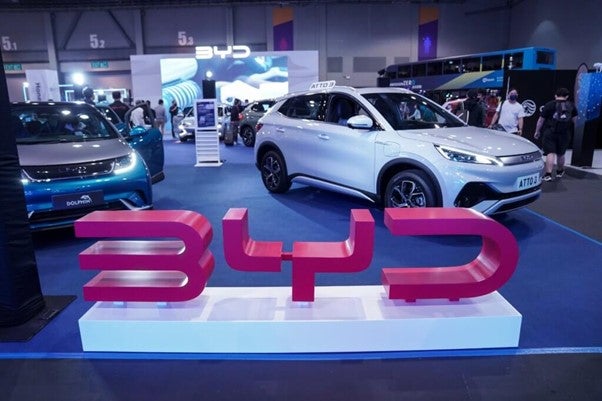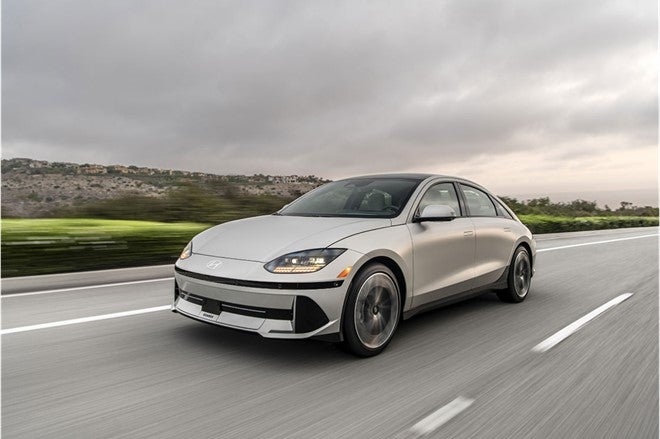
Future models, as usual, drew the most eyeballs on just-auto this week. Ford led the pack. In this first chapter of a three-installment series, highlights of likely developments for the Ford brand's global cars line were explored, along with electrified vehicles. This was followed by a look at coming developments in crossovers, SUVs and pick-ups and a third report all about the future of Lincoln.
We had two reports on the critical US market this week – no longer the world's largest (looking at you, China) but still a vast happy hunting ground for those with the right products and dealer support. The recovery of the US light vehicle market continued in September with sales hitting an estimated annualised level of around 15.9m units and manufacturers reporting low inventory levels. Private buyers appear to be returning to the market in droves with retail sales surging as fleet sales continued to slump. GM said its sales rebounded significantly in September, finishing the month with year-over-year sales increases.
Our US resident analyst put more meat on the bones: To appreciate US light vehicle sales in the third quarter, it's more important to compare them to the results in the second quarter of this year than the third quarter of 2019. Automakers delivered 3.9m cars and light trucks in the July-September period, down 8.9% from the same period last year. Year-to-date (YTD) totals as of 30 September were nearly 10.4m, a deficit of 19.1% compared to the more than 12.3m for the first nine months of 2019. However, compared to a dismal, COVID-19-constrained second quarter, Q3 sales soared.
Looking beyond the US: Analysis of national light vehicle markets for the month of September undertaken by GlobalData points to further positive progress in the industry's recovery from seized up markets during the pandemic-induced lockdowns earlier this year. Turkey's light vehicle market continued to be impervious to the disruption wrought by COVID-19 on the world's markets. Sales in September increased by 115.8%, marking the third successive month that sales there more than doubled year-on-year. Such has been Turkey's robust performance that the market has already passed 2019's total of 479,000 with over 493,000 vehicles registered year-to-date. The market's now on course for 700,000 this year, its strongest performance since 2017. Elsewhere, September sales for many major markets have now been published and positive progress seems to have been made across the board.
Driver monitoring for fatigue and distraction has become a major focus of automotive safety regulators and governments worldwide. This trend looks set to continue in SAE level 2 (partial) and 3 (conditional) semi-autonomous vehicles. If and when cars appear on the road in a highly automated mode, driver monitoring will become even more significant. Continuing just-auto/AIC's series of research snapshots, we assessed the current state of play with driver monitoring systems and some regulatory forces driving them. A driving monitoring system (DMS) uses a camera to monitor driver alertness that not only recognises the driver, but also checks his or her level of vigilance. Its purpose is to alert the driver when signs of drowsiness or distraction are detected.
See Also:
In an industry characterised by elongated supply chains that stretch across the world, supply chain visibility is an increasing issue for companies looking to mitigate risk and ensure regulatory compliance. Increasingly, automotive companies are utilising blockchain technology to gain transparency on supply chain issues such as CO2 emissions and the source of cobalt (which can come with ethical questions surrounding the mining of precious minerals). Mercedes-Benz, working with a blockchain specialist called Circulor, tracks the emissions of climate relevant gases as well as the amount of secondary material along the complex supply chains of battery cell manufacturers.
How well do you really know your competitors?
Access the most comprehensive Company Profiles on the market, powered by GlobalData. Save hours of research. Gain competitive edge.

Thank you!
Your download email will arrive shortly
Not ready to buy yet? Download a free sample
We are confident about the unique quality of our Company Profiles. However, we want you to make the most beneficial decision for your business, so we offer a free sample that you can download by submitting the below form
By GlobalDataDaimler's Mercedes-Benz this week announced a new strategic course that will pursue profitable growth in the luxury segment and target leadership in electric drive and car software. "In recent years we have done many things right: design, product engineering, brand rejuvenation, sales growth. As a result, we have put Mercedes back on top again. But we have not yet lived up to our full potential in terms of turning volume success into profit growth," chairman Ola Kaellenius told a virtual investor and analyst conference excitingly titled "Mercedes-Benz Strategy Update". Kaellenius also said "with this new strategy we are announcing our clear commitment to the full electrification of our product portfolio and our determination to ensure the business is fully carbon-neutral, in line with our Ambition 2039 target." That'll include six new EV models.
Amazon has revealed its first custom electric delivery vehicle, designed and built in partnership with Rivian. The company has committed to be net zero carbon by 2040 and 10,000 custom electric delivery vehicles will be on the road delivering worldwide as early as 2022 with all 100,000 in use by 2030. This is one of three different models that Amazon has invested in and completely customised with Rivian.
An engineering partnership led by Lotus has won UK government support and funding to develop a new next-generation Battery Electric Vehicle (BEV) architecture. The news was confirmed by the Advanced Propulsion Centre (APC). The funding is awarded as part of the APC's Advanced Route to Market Demonstrator (ARMD) competition. Funded by the UK government's department for business, energy and industrial strategy (BEIS), the competition is delivered on behalf of the APC by Cenex, the UK's low carbon and fuel cells centre of excellence. The successful application is called LEVA, which stands for Lightweight Electric Vehicle Architecture. Led by Lotus, it is targeting the acceleration of and innovation behind new lightweight structures for next-generation BEVs. Incorporating UK-based engineering and digital manufacturing expertise, LEVA will be a showcase for pioneering new BEV chassis and powertrain concepts.
Israel-based manufacturer of sensors Vayyar claims its 3D sensors can provide a detailed look inside the car, extending to key information about driver and passengers. It says the 3D image radar sensor tech it has developed doesn't use optical image capture and is also better from a privacy perspective than cameras. The embedded sensors can provide real-time info about what's going on inside a car, including monitoring passenger vital signs, and even keeping track of whether a driver is nodding off behind the wheel. Vayyar says its unique chip creates high-resolution images in real time based on advanced RF technology.
Have a nice weekend.
Graeme Roberts, Deputy Editor, just-auto.com








Related Company Profiles
Leva
Circulor Ltd
Amazon.com Inc
Lincoln GmbH
APC